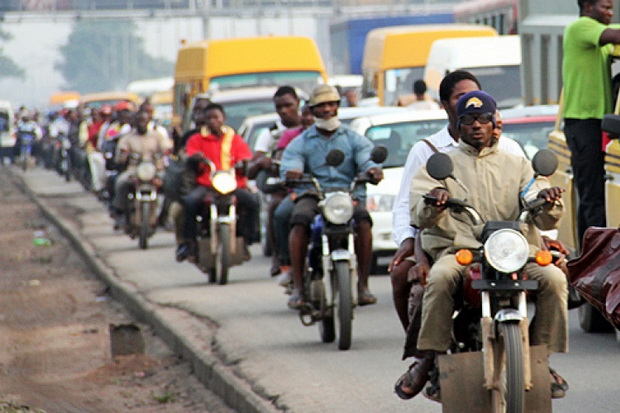
Wanted: Separate motorcycle lanes now!
In Ghana, buying a motorcycle is tantamount to signing one's death warrant. However, in Northern Ghana, rural communities and even in our major cities, motorcycle riding is a necessity, the cheapest and fastest mode of transportation, considering the vehicular traffic on a daily basis. It is virtually the alternative mode of transport for many commuters.
But untrained and unlicensed riders, non-adherence to traffic rules, disregard in the use of helmets, speeding, competition with vehicles for roads, poor road surfaces and road infrastructure, have rendered motorcycling a major risk.
Advertisement
Burkinabe experience
In Burkina Faso, women ride motorcycles more than men, using them to carry goods for sale, go to work and school and even to transport their children. On the streets of Ouagadougou, one can see hundreds of women riding motorcycles, some with babies sleeping soundly strapped at their back.
But the sense of possibility motorcycling gives to Burkinabe women comes from the many road safety measures, including separate motorcycle lanes, in the country.
According to the National Road Safety Commission (NRSC), 3,487 motorcycles were involved in accidents in 2017, contributing to 12 per cent of the total motor accidents for the year. Also, from January to May 2018, 1,612 motorcycles were involved in accidents, amounting to 17.63 per cent of the total number of 9,142 motor accidents, with commercial vehicles constituting 3,606 (39.44 per cent) and private vehicles 3,924 (42.92 per cent).
This clearly shows the increasing rate of motorcycle accidents in the country and how dangerous it is becoming to ride in the city.
Clarion call
The call for separate motorcycle lanes is, therefore, for safety for all. Ghana needs to consider separate lanes for motorcycles, including, but not limited to, compulsory skills training for motorcyclists as in the case of drivers, pursuant to Road Traffic Regulations, 2012 (LI 2180).
The mandatory wearing of helmets, stiffer penalties, stringent law enforcement, ensuring registration of all motorcycles and the mandatory licensing of riders are also needed.
A study by Procedia Engineering in 2016, an online open source collection of conference proceedings on various disciplines, showed that some Asian countries managed the motorcycle accidents by the construction of separate lanes.
As one of the most affordable travel modes, the number of motorcycles increase each year worldwide, though it differs from country to country.
In some developing countries, such as, the USA, UK and Japan, it is decreasing, while use is increasing in others such as Thailand, Taiwan, Indonesia and in most developing African countries.
Use
The use of motorcycles also differ among and between developed and developing countries. Motorcycles are commonly used for commuting and touring in developed countries, while they are used in developing countries for passenger transport (motorcycle taxi), goods transport, vending and delivery.
The need for exclusive motorcycle lane is to separate motorcycles from mixed traffic to help reduce conflict between motorcyclists and drivers.
It will also help achieve road safety targets in line with the Sustainable Urban Mobility concepts on improving accessibility by providing sustainable modes of transport, such as, cycles and public transport in urban areas.
The rapid growth of motorcycle ownership in most of our urban areas should be managed by applying effective road lane designs, providing road space for motorcycle safety and learning from the Asian example to reduce traffic accidents.
E-mail: [email protected] The writer is a Level 300 BA Communication Studies student at the Winsconsin International University College (WIUC).



